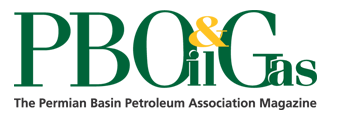
Augmented Reality (AR) to Help Bridge Skills Gap in the Oil and Gas Industry
The COVID-19 pandemic, geopolitics, and energy transition expectations have caused the oil and gas industry’s skills gap to slip down companies’ agendas, says GlobalData, a leading data and analytics company. According to GlobalData, the industry needs to capitalize on emerging technologies such as augmented reality (AR) to accelerate the training of a new generation of workers or be left paralyzed in the face of disruption.
GlobalData report, “Augmented Reality (AR) in Oil and Gas – Thematic Research,” states that the next few years will be crucial for the oil and gas industry. As pressure from investors for energy transition mounts, oil and gas companies will need to recruit a new generation of workers to undertake this mammoth task.
Francesca Gregory, Associate Analyst at GlobalData, comments: “Oil and gas companies have received a battering in recent years, with COVID-19 having lasting effects on demand for particular oil products. In addition, the Russia-Ukraine conflict has caused price hikes, shrouding the sector in uncertainty.”
The industry is suffering from an aging workforce, which has left it brittle in the face of change. Pandemic-related disruption has caused the long-term skills shortage to take a backseat and, as the Russia-Ukraine crisis looms large, there is a risk that the industry’s internal weak points will go unaddressed.
Gregory continues: “Oil and gas companies must expedite the training of younger workers and pursue more flexible ways of working to maximize knowledge capture from retiring workers. Emerging technologies such as AR will be a vital piece of the puzzle for knowledge capture and transfer. AR headsets allow for remote collaboration between field workers and experts. This enables semi-retired workers to work from home while still providing support to field technicians, overlaying annotations and instructions onto their field of view.”
Enterprise spending on AR is forecast to reach $100 billion in 2030 and the oil and gas industry will be one of its key markets, with major oil and gas companies such as Shell, Exxon Mobil, and TotalEnergies integrating the technology into their businesses. This early adoption has been catalyzed by the development of rugged AR headsets such as the XR10 version of the HoloLens 2, as well as software products that are cybersecure and can operate under low bandwidth.
Gregory concludes: “As industrial designs become more ergonomic, we can expect adoption to accelerate. Oil and gas companies will be key players with AR holding the potential to substantially increase the efficiency of workflows in the upstream sector.
“Companies that fail to capitalize on emerging technologies such as AR will continue to have a slow training process, creating a skills gap in their workforce further down the line.”
The post Augmented Reality (AR) to Help Bridge Skills Gap in the Oil and Gas Industry appeared first on Permian Basin Oil and Gas Magazine.
This content was originally published here.

